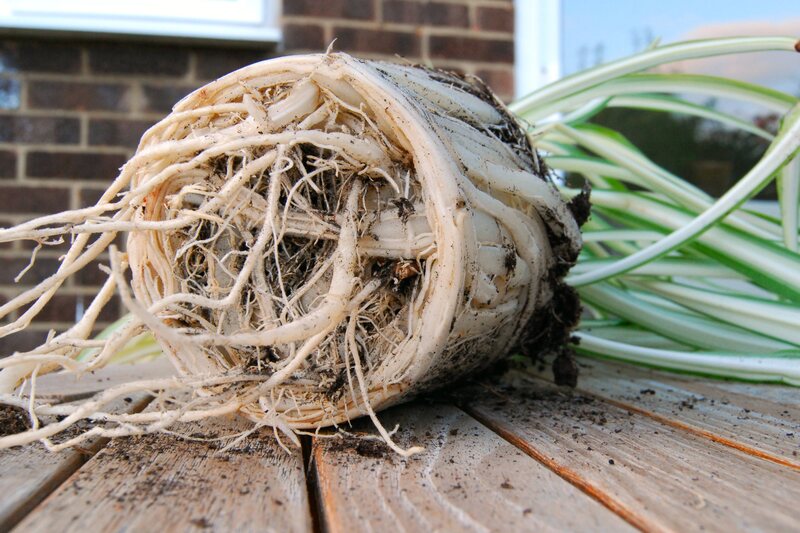Step-by-Step Guide to Extracting a Tree Stump Safely
Tree stumps can be both unsightly and hazardous in any yard or garden. Whether you've removed a diseased tree or cleared space for new landscaping, the left-behind stump is an obstacle ready for removal. This comprehensive guide details the step-by-step process for extracting a tree stump safely. With careful planning, the right tools, and a bit of elbow grease, you can reclaim your lawn and ensure the job is done without injury or property damage.
Why Is Safe Tree Stump Removal Important?
Tree stumps pose risks beyond being just a visual nuisance. Consider the following reasons for removing a tree stump safely:
- Prevents accidents: Stumps are tripping hazards for children and adults alike.
- Halts pest infestations: Decaying wood attracts termites, carpenter ants, and other pests.
- Stops regrowth: Some species resprout, forming unsightly new shoots.
- Increases property value: A clean lawn is more appealing for homeowners and potential buyers.
- Simplifies landscaping: Unobstructed yards make mowing and gardening easier.
The process may seem daunting, but with our systematic approach, you'll gain the confidence to tackle tree stump extraction safely in your landscape.

Preparing for Safe Tree Stump Extraction
1. Assess the Stump and Surrounding Area
Not all stumps are created equal. Size, root system, tree species, and proximity to structures or utilities influence the tree stump removal strategy. Examine:
- Diameter of the stump: Larger stumps need heavier equipment.
- Root spread: Some trees, like poplars or willows, have wide root systems.
- Soil type: Sandy, loose soils are easier to excavate than clay or rocky ground.
- Location: Are there nearby water lines, fences, or gardens?
2. Gather the Right Tools & Safety Equipment
Extracting a tree stump requires the right set of tools for safe stump removal. Depending on your selected method, assemble:
- Sturdy shovel and spade
- Mattock or pickaxe for tough roots
- Axe, loppers, or pruning saw for root cutting
- Safety glasses and heavy-duty gloves
- Steel-toed boots
- Protective clothing (long sleeves, pants)
- Chainsaw (optional, for larger stumps)
- Rope or chain (for pulling)
- Stump grinder (for mechanical removal)
- Chemical stump remover (for chemical method)
3. Clear the Worksite
Remove rocks, debris, plants, and any obstacles from around the stump. Mark the area clearly if working near walkways or driveways, and ensure pets and children keep a safe distance.
Popular Methods for Extracting a Tree Stump Safely
Choosing the best strategy depends on your timeline, budget, and physical ability. Here are the most effective safe tree stump extraction methods:
Manual Extraction - Best for Small Stumps
A practical solution for stumps with less than 12-inch diameters, manual removal requires physical effort but guarantees precise, safe extraction.
Step 1: Cut the Stump Down
If not already done, use a chainsaw or handsaw to cut the stump as close to ground level as possible.
Step 2: Dig Around the Base
With a shovel or spade, dig a trench in a 1- to 2-foot radius around the stump. Expose as many roots as possible.
Step 3: Sever the Roots
Using an axe, mattock, or saw, cut through the main roots. For stubborn roots, loppers provide better precision and safety.
Step 4: Pry and Remove the Stump
Once the lateral roots are severed, use the shovel as leverage to lift the stump. A long pry bar or additional digging may be required for deep taproots.
Step 5: Fill the Hole
Remove all loose roots, then backfill the hole with soil. Tamp it down to avoid future sinking.
Mechanical Extraction Using a Stump Grinder
Stump grinders can efficiently remove larger tree stumps down to below the soil level, making them a popular choice for professionals.
Step 1: Rent a Stump Grinder
Home improvement stores rent out grinders suitable for residential use. Ensure you get a model appropriate for your stump size.
Step 2: Wear Protective Gear
This includes goggles, gloves, heavy clothing, and closed-toe boots. Grinders expel debris at high velocity.
Step 3: Prepare the Stump
Remove rocks or metal debris. Use a chainsaw to cut the stump as low as possible.
Step 4: Grind the Stump
Start the grinder and slowly lower the cutting wheel into the stump, moving back and forth according to manufacturer directions. Grind several inches below grade.
Step 5: Clean Up
Shovel away chips and add soil to the hole left behind.
Chemical Stump Removal
This method involves applying a potassium nitrate-based chemical that accelerates wood decay, making the stump easier to remove after several weeks. Always follow safety directions.
Step 1: Drill Holes
Using a power drill with a large bit, create holes in the top and sides of the stump, spaced a few inches apart, as deep as possible.
Step 2: Apply Stump Remover
Following product instructions, pour a chemical stump remover into the holes. Add water if necessary.
Step 3: Wait
It can take weeks or months for the stump wood to soften. Keep children and pets away during this period.
Step 4: Remove the Rotting Stump
Once the wood is soft, use a shovel, axe, or root saw to break up and remove the remains. Fill in the site as for other methods.
Burning (Only Where Permitted)
Warning: Burning stumps is prohibited in many areas due to fire risk. Check local regulations and secure permits if allowed. If burning is legal and safe:
- Drill holes in the stump and fill them with kerosene (not gasoline).
- Wait for the fuel to absorb over a few days.
- Ignite safely, monitoring the fire until the stump is fully consumed.
- Extinguish thoroughly and fill the hole.
Expert Tips for Safe and Efficient Stump Extraction
- Stay hydrated and take breaks. Manual labor can be exhausting, especially in warm weather.
- Never use equipment without reading the manual and following all safety precautions.
- Keep tools sharp - Dull tools are more likely to cause injury.
- Observe your surroundings. Be cautious of underground utilities. Call your local utility marking service before digging.
- Dispose of stump waste properly, following local guidelines for yard waste or composting if appropriate.
- Work with a partner for large stumps or when using mechanical tools.
Frequently Asked Questions About Safe Tree Stump Extraction
How long does it take to remove a tree stump safely?
The timeline varies: manual extraction can take a few hours, mechanical methods often under two hours, while chemical tree stump decomposition can last weeks or months. Large or mature stumps typically require more effort and time.
Is it better to hire a professional for tree stump removal?
If the stump is extremely large, near utilities, or in a hard-to-reach location, hiring a stump removal specialist is the safest course. Professional arborists possess specialized equipment and knowledge to extract tree stumps safely without causing damage to your property.
What should I do with the hole left behind?
Backfill the hole with soil, tamping it firmly to reduce settling. You can then reseed, landscape, or install new features as desired.
Can I remove a stump in wet or cold weather?
Wet ground might make digging easier, but excessive mud increases the risk of slips and tool accidents. Frozen soil is difficult to excavate, so plan your safe stump extraction for mild, dry weather for best results.
Alternative Solutions: When to Leave the Stump
In some cases, tree stumps can become unique natural features in your landscape. Consider converting the stump into a rustic seat, planter, or garden art. However, always ensure the stump is stable and not diseased if you opt for creative reuse.

Final Thoughts on Extracting a Tree Stump Safely
Effective and safe tree stump extraction is achievable for most homeowners with the right preparation, caution, and method. Remember to prioritize safety with every step:
- Always wear appropriate protective equipment
- Keep children and pets clear of the worksite
- Pause or get help if you encounter unexpected obstacles
- Be patient--rushing increases the risk of injury
Armed with this comprehensive step-by-step guide, you'll not only restore the beauty and safety of your yard but accomplish your tree stump removal project with confidence and peace of mind.
Want Professional Help?
If DIY stump removal feels too daunting or risky, don't hesitate to reach out to a local tree care specialist or arborist. They have the equipment, training, and insurance to ensure tree stump extraction is done quickly and safely, letting you enjoy a tidy outdoor space without the hassle.
For more tips on safe landscaping and outdoor maintenance, continue exploring our blog!